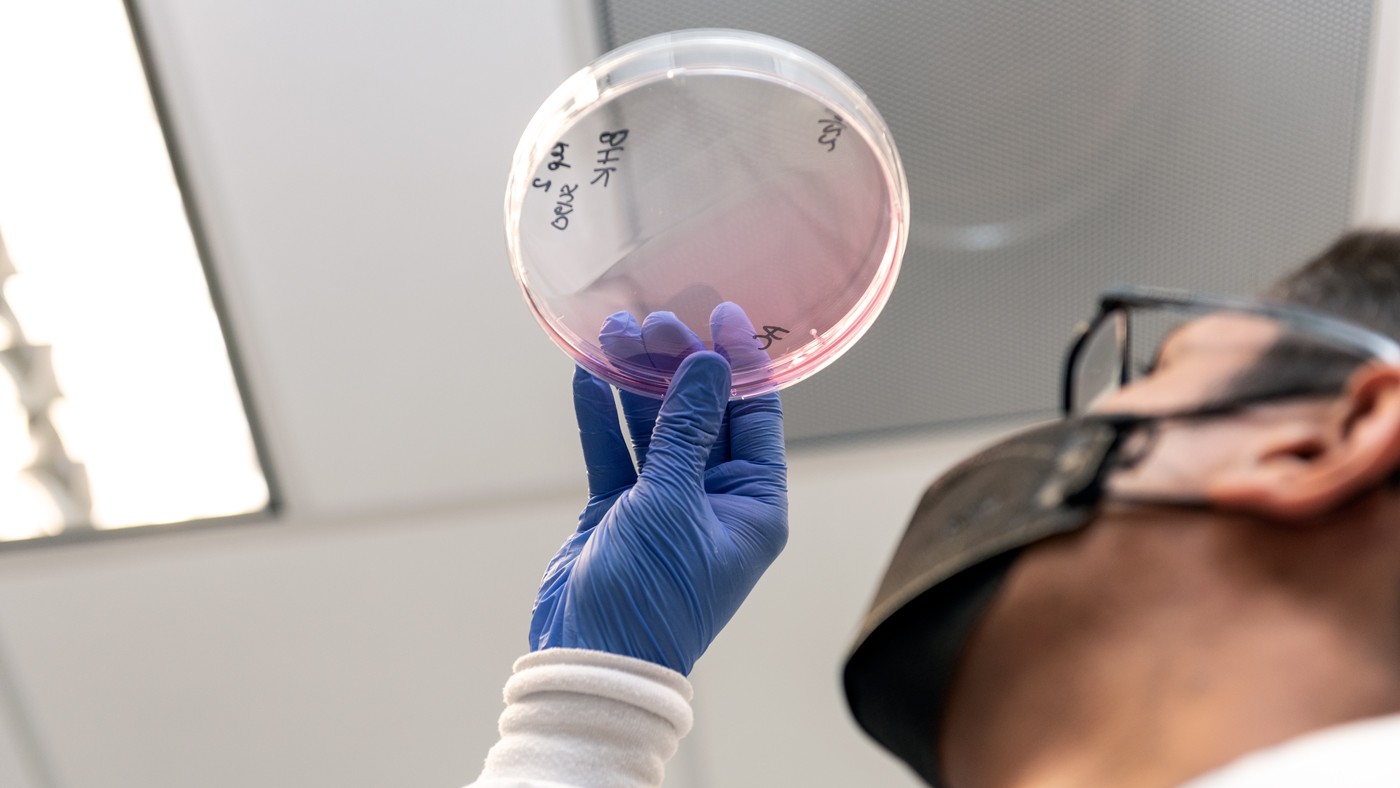Gladstone NOW: The Campaign Join Us on the Journey✕

Virologists at Gladstone answer questions about the convergence of COVID-19, RSV, and the flu this winter.
As we approach the height of the holiday season, some medical experts have warned of a potential “tripledemic”—a simultaneous surge in cases of COVID-19, the flu, and RSV (respiratory syncytial virus).
How concerned should you be, and what does this mean for your holiday plans?
We asked three Gladstone virologists—Senior Investigator Warner Greene, MD, PhD; Director of the Gladstone Institute of Virology Melanie Ott, MD, PhD; and Senior Investigator Nadia Roan, PhD—for their perspectives.
How Likely Is a Tripledemic to Happen?
“These three respiratory viruses are already circulating at high levels in the United States, so in that sense, I don’t think this tripledemic can be avoided,” says Roan. “But the extent to which it affects society and strains our hospitals can be controlled by being vigilant: getting vaccinated, masking, and testing.”
And while case counts of each virus are high, they may peak at different times.
“RSV seems to have peaked and may be receding a bit,” says Greene. “The flu is now coming on hard, and COVID-19 hasn’t quite taken off yet, but we anticipate an upsurge in the coming weeks.”
Why Are These Three Viruses Surging around the Same Time?
RSV is a common respiratory virus that has circulated widely in the past, as has the flu. However, since early 2020, measures to mitigate the spread of COVID-19 have also reduced transmission of RSV and the flu, resulting in less exposure and lower immunity.
“We have been relatively isolated over the past few years because of COVID-19, and as a result of that, we have been exposed to fewer airborne pathogens,” Roan says.
Now, with pandemic fatigue widespread in many communities, people are masking less and socializing more.
“Combined with our reduced immunity, this increased contact is allowing all three viruses to spread with greater intensity,” Ott says.
Why Is RSV Affecting Young Children More than Adults?
With large numbers of children recently infected with RSV, pediatric hospitals have seen a major upswing in patients who need extra support. However, RSV has always been prevalent in children, particularly very young ones. Fortunately, after initial exposure, most children develop immunity that protects them from serious RSV infection later on in life.
But children are not the only ones affected. Adults are getting—and spreading—RSV as well. Younger adults tend to experience only mild symptoms, but the virus can hit older adults harder.
“Older adults can be at risk of more severe RSV, for which there is currently no vaccine,” says Roan.
“More than 10,000 adults over the age of 65 die every year from RSV infection,” adds Greene.
People with underlying health conditions may also be at greater risk of severe RSV.
How Can We Stay Safe over the Holidays?
“First and foremost, please do your part and make sure you received the flu shot and updated COVID-19 vaccines,” says Roan. “The more people who do this, the more we can avoid causing ourselves and others to be seriously ill, and we can avoid overwhelming hospitals.”
Greene notes that while the updated COVID-19 booster and this season’s flu vaccine may not completely prevent infection, they are very effective at lowering the risk of serious illness that could lead to hospitalization and death.
“Being up to date on vaccinations, knowing about your treatment options, and being vigilant by masking and testing can all contribute to lessening the burden of this tripledemic.”
Masking indoors in crowded conditions is another important measure to help prevent the spread of all three viruses. In addition, handwashing and keeping surfaces clean can reduce transmission of RSV and the flu.
“Testing for COVID-19 before gathering—and isolating if positive—are also key to avoid transmitting the highly infectious Omicron sub-variants to others,” Roan says.
Families should take into account that older adults and people with compromised immune systems are especially vulnerable to all three diseases.
Can You Get Infected with More than One Virus at Once?
“It’s possible that more than one virus could affect the same person at the same time,” says Roan. “In general, it’s not a good thing to be fighting two viruses simultaneously, as it may increase the risk of severe symptoms.”
Doctors have already seen cases of simultaneous infection, Greene says. However, evidence suggests the three viruses may, to some extent, keep each other in check, reducing people’s risk of co-infection.
“This is due to the innate response induced by one infection, which limits infection by another virus—at least temporarily,” says Ott.
Bottom Line?
Doctors have multiple tools to deal with these three viruses. For instance, the drug Paxlovid can help treat COVID-19. Flu patients can also be treated with Tamiflu, which works best within 36 hours of becoming ill.
But the precautions you take are still the most powerful ways to prevent getting very sick this holiday season.
“Being up to date on vaccinations, knowing about your treatment options, and being vigilant by masking and testing can all contribute to lessening the burden of this tripledemic,” says Roan.
Support Discovery Science
Your gift to Gladstone will allow our researchers to pursue high-quality science, focus on disease, and train the next generation of scientific thought leaders.
Gladstone’s Scientific Highlights of 2025
Gladstone’s Scientific Highlights of 2025
From fundamental insights to translational advances, here’s how Gladstone researchers moved science forward in 2025.
Gladstone Experts Alzheimer’s Disease Autoimmune Diseases COVID-19 Neurological Disease Genomic Immunology Cardiovascular Disease Data Science and Biotechnology Infectious Disease Conklin LabScience in Seconds | Researchers Pinpoint Key Gene Behind Heart Defects in Down Syndrome
Science in Seconds | Researchers Pinpoint Key Gene Behind Heart Defects in Down Syndrome
In this video, Gladstone scientists share how they used stem cells, gene editing, and AI to identify a gene driving heart defects in Down syndrome—and how reducing its levels in mice restored normal heart development, offering hope for future treatments
Gladstone Experts Cardiovascular Disease Data Science and Biotechnology Pollard Lab Srivastava Lab AI Big Data CRISPR/Gene Editing Human Genetics Stem Cells/iPSCsScience in Seconds | The Thinking Microscope: Research Powered by an AI Brain
Science in Seconds | The Thinking Microscope: Research Powered by an AI Brain
In this video, Steve Finkbeiner and Jeremy Linsley showcase Gladstone’s groundbreaking “thinking microscope”—an AI-powered system that can design, conduct, and analyze experiments autonomously to uncover new insights into diseases like Alzheimer’s, Parkinson’s, and ALS.
Gladstone Experts ALS Alzheimer’s Disease Parkinson’s Disease Neurological Disease Finkbeiner Lab AI Big Data






